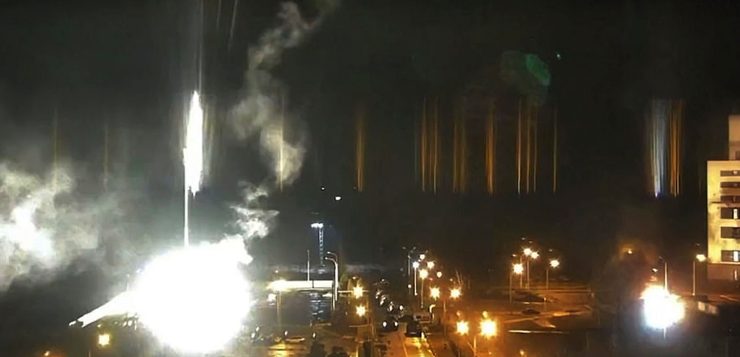The war in Ukraine is going to kill us all, courtesy of an explosion at the Zaporizhzhia nuclear power plant. Except that it’s not. Even if it does blow up. Which it won’t. Geoff Russell explains the latest wild panic over the ‘nuclear threat’.
1843 Magazine contained a graphic account of the Balabas family’s suffering in the Ukraine war in its article: “East of Mariupol: what happened to the Ukrainians who fled to Russia?”. On the 2nd of March, the electricity cut out. Soon there was no internet, mobile phone, or TV reception. It was March 15 before the family got hold of a radio and more news, rather than just word of mouth.
When their apartment block was hit by bombs, killing a nephew and injuring all of them, Natalya and her husband Roma and their three children fled in the only direction they could, in a complex situation about which they had little knowledge; east.
A doctor told them to keep their wounds sterile with antiseptic….
“We don’t have antiseptic,” Natalya told him.
“Use vodka.”
“We don’t have vodka.”
“Then you can use urine,” he said.
Electricity is similar to antiseptic. You take it for granted when you have it, but when you don’t its absence looms large. How many people with minor injuries have died in Ukraine as a result of missing these mundane “little” things? You can’t sterilise things with boiling water if you can’t boil water. Fridges stop working and food goes off. You may have bought a bag of rice when the war began, but eating it when you can’t cook it is a problem. You could soak it overnight if you had water, preferably clean, but with no power, pumping stations stop. Fuel becomes a problem without pumps. Add to that people firing missiles at you and you can see the problems.
The article makes for chilling reading, but is lightened by the many random acts of kindness along the way that helped the remaining family members survive.
Some kinds of dying don’t make newspaper headlines. They are hum-drum; almost normal. Real tragedy is often like this. After the summer of 2003, the hottest on record in Europe at that time, bodies were being removed from apartment blocks for months afterwards. People dying alone of heat stroke in rooms with no air-conditioning, often in old historic buildings with copper roofs. People were, literally, baked. It’s a plain, simple and terrifying thought.
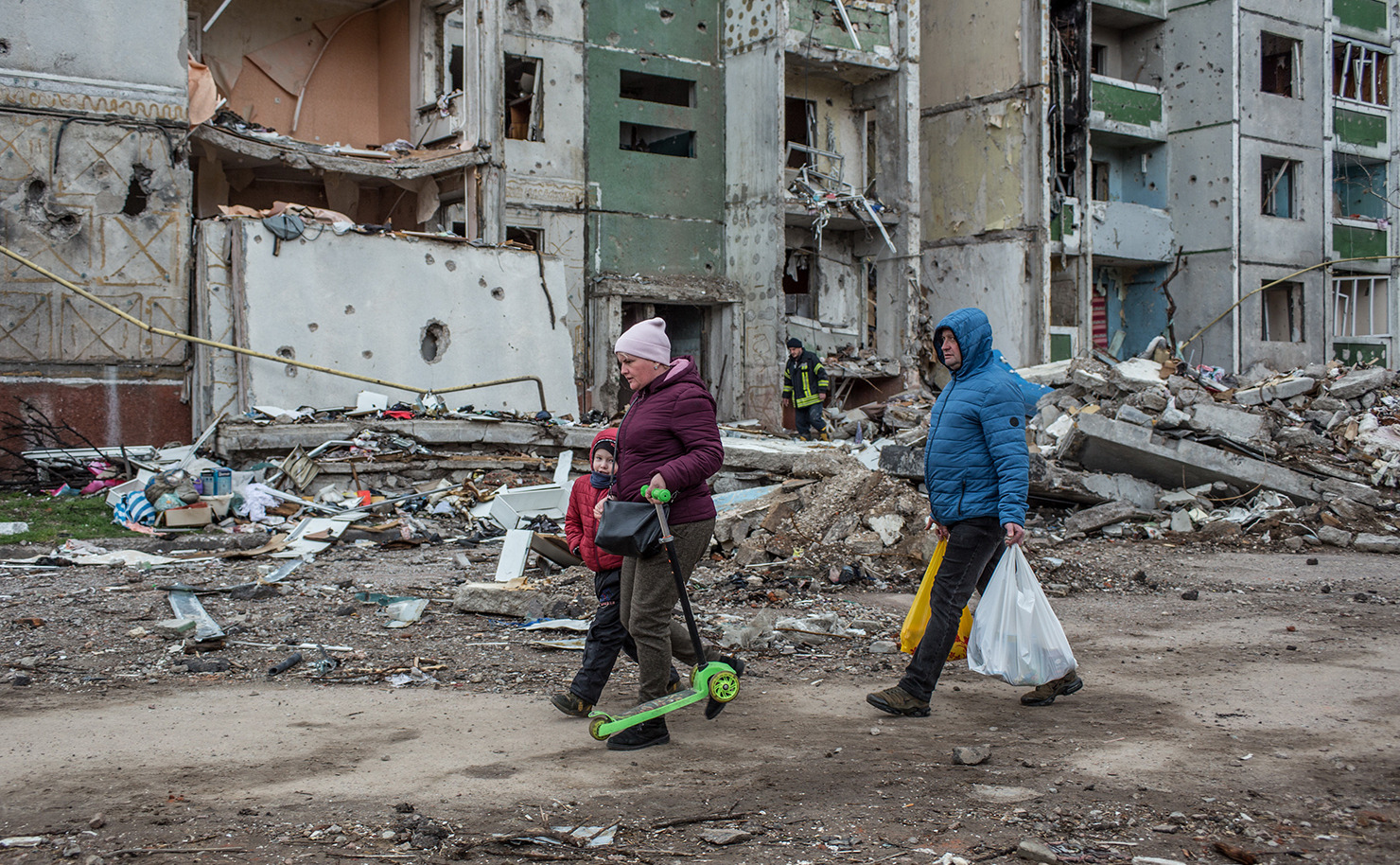
So what are we to make of a press release like this from the International Atomic Energy Agency (IAEA) describing events at the Zaporizhzhia nuclear power plant?
“I’m extremely concerned by the shelling yesterday at Europe’s largest nuclear power plant, which underlines the very real risk of a nuclear disaster that could threaten public health and the environment in Ukraine and beyond.”
Few in Australia will have heard of Ukraine’s Zaporizhzhia nuclear power plant prior to Russia’s invasion. It has six 950MW Russian VVER-1000/320 nuclear reactors. The first came into operation in 1984 while the last was commissioned in 1995.
Prior to the invasion, the Zaporizhzhia reactors supplied 20% of Ukraine’s electricity; that’s electricity for close to nine million people.
Contrary to what the IAEA suggests, the disaster isn’t imminent or potential, and public health is already suffering. What more could a “nuclear disaster” deliver? Surprisingly, not much really, as I’ll explain below.
Months without power IS a disaster
Belgian nuclear news agency Nucnet reported back in early March that only one of the 6 reactors on site was operating and that one was only running at 60 percent. Another 2 reactors were running at low power “in reserve”.
Six months later, on September 5, the IAEA is still reporting just a single reactor running. Back in mid-August briefly, the IAEA reported that two reactors were running.
Why do so many news reports talk about this as a potential disaster? Surely the loss of electricity on such a scale and for such a duration is an actual, immediate and on-going disaster?
These reactors are a tool in Putin’s war. Infrastructure is always a target during wars. But invaders would prefer to keep it rather than trash it. They want the reactors disabled, turning them to rubble is a waste of rubles.
Robbing the country of 20 percent of its power for months will be far more deadly than any nuclear ‘disaster’, other than by virtue of the obvious fact that a nuclear ‘disaster’ would also take the reactors offline… probably permanently.
I’ve put the word ‘disaster’ in quotes, because nuclear disasters are different from most other disasters. In a nuclear disaster, very few people, if any, actually die, or suffer any kind of health impact worse than that inflicted by a bacon or a beer habit.
Memories of Fukushima and radiation burns
When the media discuss matters like this, I’m reminded of the Fukushima meltdowns in 2011. For days, at a Fukushima hospital, people were being bought in with horrendous injuries from the tsunami and quake. Many had died. Media photographers camped outside the hospital. They could have gone inside and taken all manner of horrific photos of real tragedy. Instead, they waited for, and were blessed by, the arrival of a couple of Fukushima workers with radiation burns. That story went global.
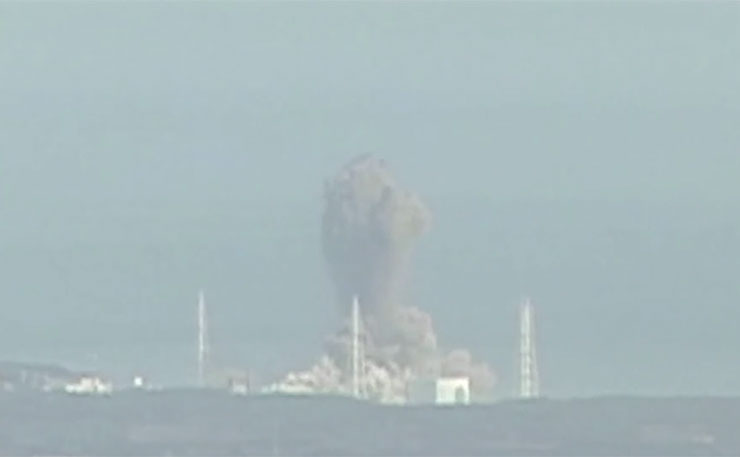
It’s so much more lucrative to sell stories about potential doom rather than actual doom such as infected wounds, amputated limbs and the like; the latter are highly disturbing and nobody really wants to see them. But a potential tragedy? That’s media gold.
Concerns about potential nuclear disaster will sell more newsprint than stories about the lack of electricity, even if the latter is far more deadly.
Potential disaster porn
In August, The Washington Post reported rocket attacks “near the plant’s spent-fuel storage facility” and later reported that reactor 4, the one that had been operating, has been taken offline as a result of “damaged infrastructure”… whatever that meant. This kind of reporting with its talk of potential nuclear catastrophe has been common. UN Secretary-General António Guterres called attacking a nuclear plant “suicidal”. I wish that were true! Unfortunately, it isn’t.
Remember when the world’s media started salivating over the spent fuel ponds at Fukushima? Even the New York Times got in on the act.
Unfortunately for the Washington Post’s potential disaster narrative, the spent-fuel pools for these reactors are inside the containment building, which makes them impervious to normal artillery.
On September 6, the Washington Post continued with the potential catastrophe theme, citing the most recent IAEA report and using a quote from IAEA Director General, Rafael Grossi:
“They are playing with fire,” Grossi said, “and something very, very catastrophic could take place.”
But taking 20% of Ukraine’s power offline, including hospitals, water pumping stations, fuel pumping stations and so on? That’s not a potential catastrophe, that’s an actual and ongoing catastrophe.
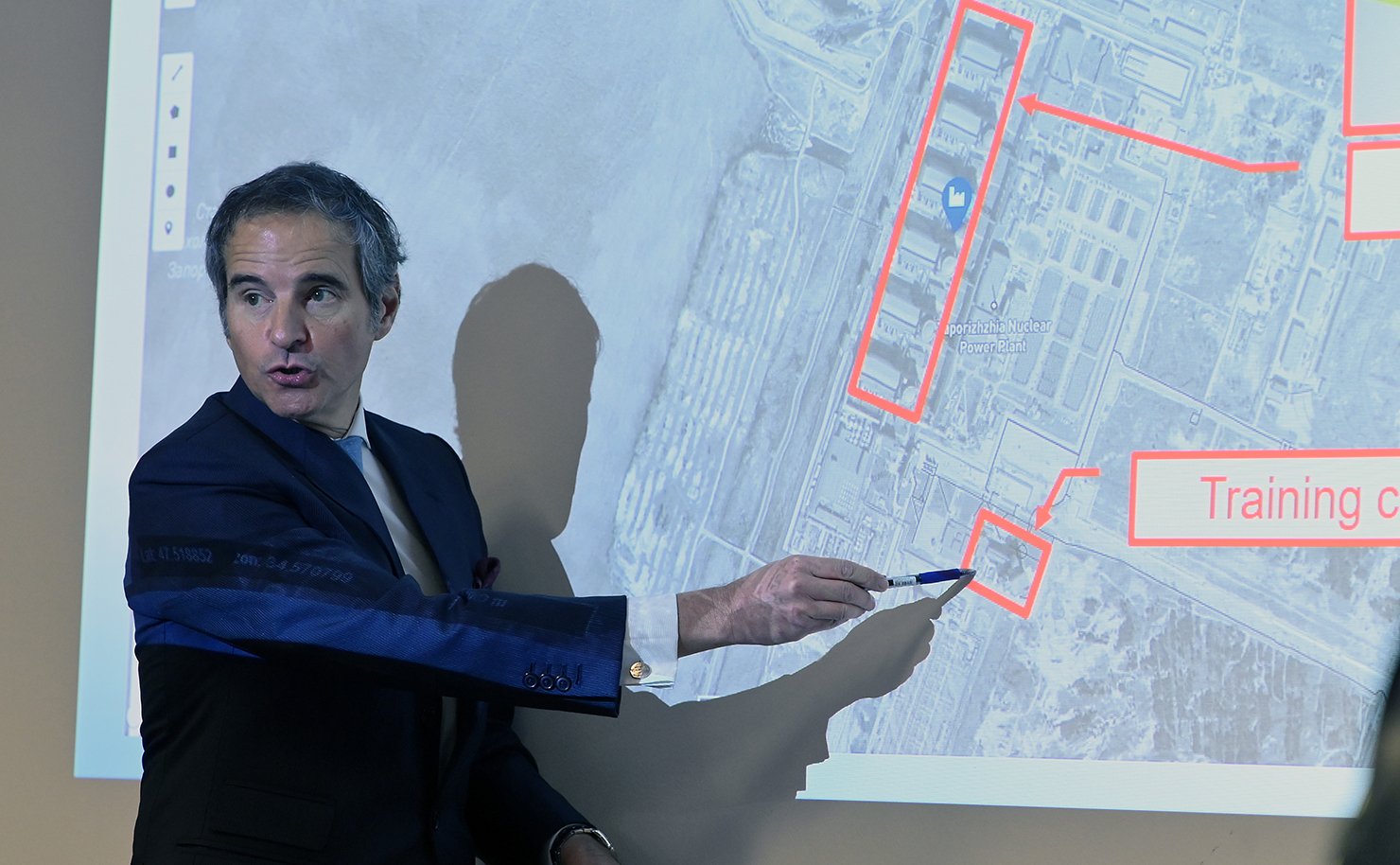
Strictly speaking, adding a radiation accident on top of that would be worse, but the radiation accident itself couldn’t be worse than what is already happening.
Consider your wound gets infected and you die or lose a limb because of the breakdown in health care as a result of the war and no electricity. Or perhaps you are in the middle of surgery when the power goes out and the backup generators have long since run out of diesel. Or you take the wrong road out of town because you have no information about the safest route and you get bombed.
Or… there is a radiation leak and you get a radiation dose which you don’t feel but which increases your chance of cancer during the rest of your life by a few percent (unlikely that very many people would get such a dose – the town of Zaporizhzhia is about 70kms from the plant as the crow flies).
Which is worse? It’s like giving people a choice between the guillotine and a paper cut.
My guess is that Grossi is using ‘strategic lying’ as a tool to frighten troops away from the plant. One problem with this kind of lying, is the long-term consequences. He is frightening not just Russian and Ukrainian forces, but the entire planet. And he’s inadvertently frightening them away from nuclear power and into the arms of a worsening climate.
It’s a terrible strategy. Better to play it straight and tell it like it is. Namely that it’s a barbarous tactic of war to use the power infrastructure as a weapon; just as it is barbarous to use starvation or rape. You don’t need to invent catastrophes – there is no shortage of real ones.
Counting the dead
It will be hard to count the deaths caused by keeping the Zaporizhzhia reactors offline. They will just be waves on an ocean of tragedies.
In many wars, it isn’t the fighting that ends up being the most deadly. It will only be after the fighting has stopped that the death count can be compared with normal years to find out the full impact.
Epidemiologists talk about ‘excess deaths’. Ukraine normally has about 15.2 deaths per thousand of population, which means that about 671,000 people die each year from its population of 44.13 million. An increase in the basic rate of just 1 per 1,000 as a result of the breakdown in medical and infrastructure services would see this figure rise by 45,000, in addition to the direct deaths of civilians and soldiers.
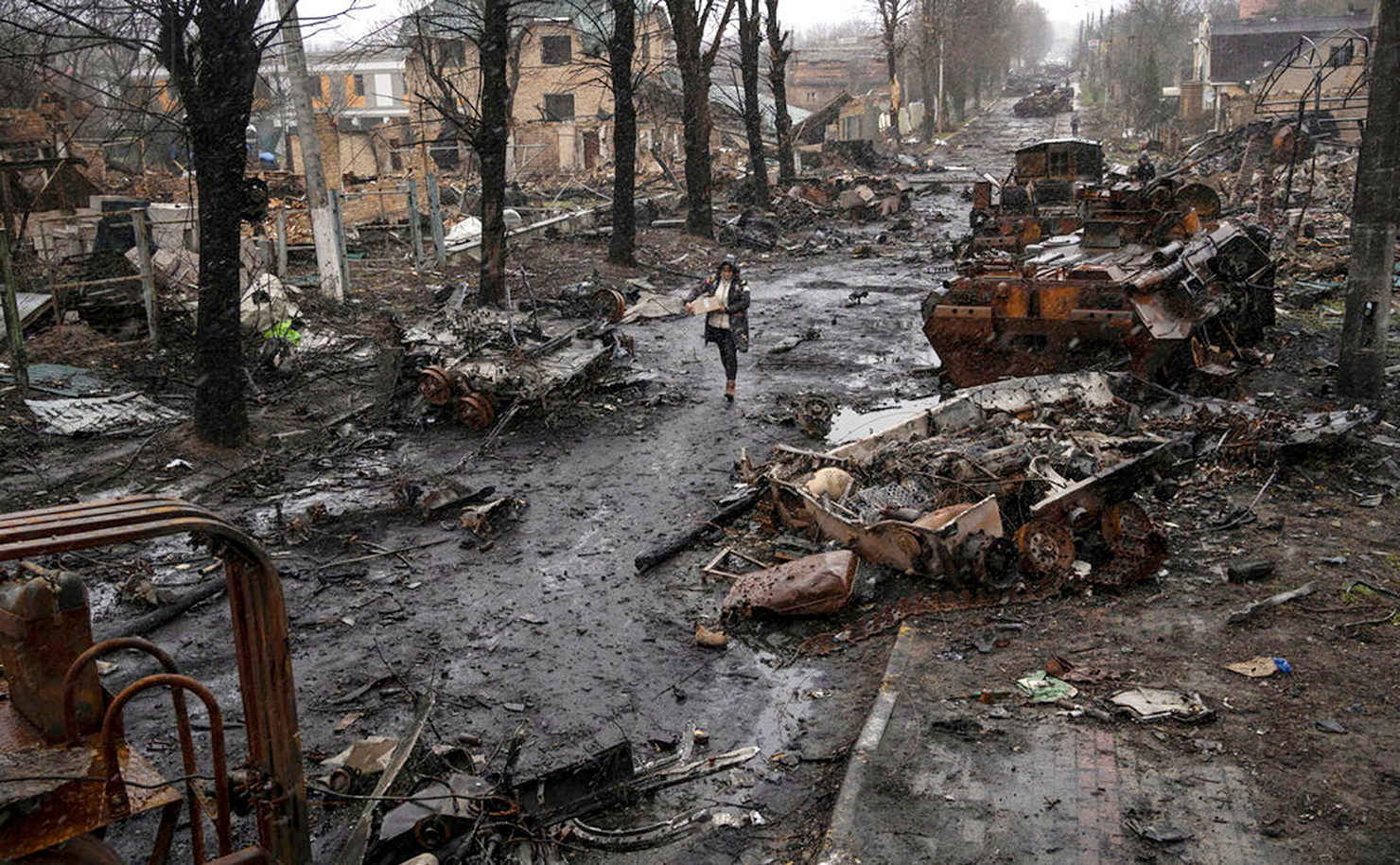
The number 45,000 would be ‘excess’… meaning simply ‘deaths in excess of the normal rate’. And the rise could well be more than 1 per 1,000.
Consider for example Covid-19. There are two death tolls. First, the people who have Covid-19 listed as a cause of death on their death certificate. Second, the people who died because hospitals were full or their surgery was cancelled or they didn’t get their HIV medication. Covid has caused considerable disruption in many basic services. Back in November 2021, a team at The Economist estimated that the excess death toll of Covid-19 was about 17 million; 12 million higher than the then official toll of five million.
It’s the same with Putin’s war. He isn’t just killing people with bombs, he’s killing people with everything from the disruption to grain supplies, to electricity generation, to water supplies. And the deaths aren’t only in Ukraine, but in countries hit by the global food supply chain disruptions; particularly northern Africa.
Taking these reactors offline is killing people, even if we can’t yet say exactly how many.
What can possibly go wrong?
But what if things do go wrong? Can things get any worse than reactors off line? Why did I say ‘not much really’ earlier above?
People often think about a reactor ‘blowing up’?
Reactors don’t blow up… not in the nuclear sense. Reactor fuel isn’t weapons-grade. The name itself is a give-away. You need weapons-grade fuel to make weapons. When Chernobyl exploded, that was a steam explosion, not nuclear. When the puff of smoke at Fukushima made headlines around the world, that was a hydrogen explosion, not nuclear. This isn’t a fine semantic distinction. Both steam and hydrogen explosions can kill people but they don’t level 10s or hundreds of hectares like an atomic bomb does.
So ignoring the nutter claims about nuclear explosions, what can actually go wrong? Nothing without ill intent. Let’s deal with the containment building first. That’s the thing housing the reactor.
Guns and light arms and even artillery won’t penetrate the reinforced concrete of a modern nuclear reactor containment building. They are built to withstand aircraft impacts.
Here’s a great piece of film footage showing a fighter jet being slammed into a reinforced concrete block at 800 kilometres per hour. The penetration depth was just 60mm.
Containment concrete is typically over 1 metre thick and the round shape and steel reinforcing adds strength making it tougher to penetrate than a flat wall. Zaporizhzhia’s reinforced concrete containment is 1.5m thick.
There’s plenty of things you can bomb and cause a reactor to shut down; this is what appears to have happened back in mid-August in Ukraine. The worst case here is loss of cooling. The reactor overheats. The fuel melts, creates steam and if it isn’t released, then boom – a meltdown and explosion.
The containment building is designed precisely for such an event. But we know from Fukushima what happens with meltdowns. Nothing… until you do something very stupid like throwing the sick and elderly onto buses in the middle of the night to protect them from something that is far less dangerous than… being thrown onto a bus in the middle of the night. People died as a result of the evacuation in Japan, not radiation.
And then there’s malevolence
Unfortunately, there are plenty of munitions which can penetrate a containment concrete; bunker busters can bust most things. But they aren’t common and you’d need to be very deliberate in your attempt. The actual risk from an attack is far less than the perceived risk. Because experts typically rant vaguely about the risks, people fill in the gaps and assume the worst. It’s just like a horror movie. The monster you can’t see is far scarier than when it steps out into the light.
The very best in potential disasters are those of which we have no experience. Flooding in Pakistan? Millions displaced? We all know about floods, they are horrid, but understandably horrid. They provoke compassion and sympathy rather than terror.
But the mere mention of nuclear disaster lets our imagination run wild, unconstrained by facts or experience. What about Fukushima? There was experience there. Didn’t we learn anything? Did you notice all the reporting, at least the stuff I saw in English, was about ‘potential’ disaster? It never became reporting about ‘actual’ disaster. Even for the evacuees. They never found out what they were running from because it never caught anybody. This is the Emperor’s New Clothes on steroids.
So let’s assume Putin is losing and, out of spite, decides to smash one or more reactors. Such an event would be infinitely preferable to him dropping an atomic bomb. So let’s hope he doesn’t read this article and decide out of spite to visit a nuclear ‘disaster’ on Ukraine by way of hitting one or more reactors at Zaporizhzhia, rather than doing something that would truly be catastrophic, like an atomic bomb on a populated area, which would be a nuclear disaster instead of a nuclear ‘disaster’.
Keep in mind that permanently taking 6 reactors off-line is truly catastrophic without even considering the consequences of radiation.
Radiation from a smashed reactor containment
The closest we can get to understanding the consequences of such an event is the 1986 accident at Chernobyl. But in 2022 we can assess this accident with the benefit of hindsight rather than the panic of the day.
If your knowledge of the event comes from the HBO Chernobyl series then you should read what Robert Gale has to say about that fictionalised account. Gale is a US doctor who went to Chernobyl and treated the injured and irradiated fire fighters. He has over 1,000 scientific papers to his name. He’s the kind of experts other experts go to.
I remember seeing footage of him at Fukushima, walking around in shirtsleeves amid large teams in hazmat suits. Was he being foolish? No. Just knowledgeable. His multi-part takedown of HBO’s brilliant but fundamentally misleading TV is here. My less expert but simpler account is here.
First things first. Just punching a hole in the reactor containment wall isn’t enough to be dangerous. You also have to penetrate the steel of the reactor pressure vessel inside. When, as at Chernobyl, the pressure vessel is exploded by steam pressure from inside, you have the worst case. Because in order to spread radioactive material, you need something to spread it. It’s certainly dangerous to approach too close, but it isn’t a tiger, it won’t hunt you down and chase you. Nuclear fuel is just little pellets – they just sit there.
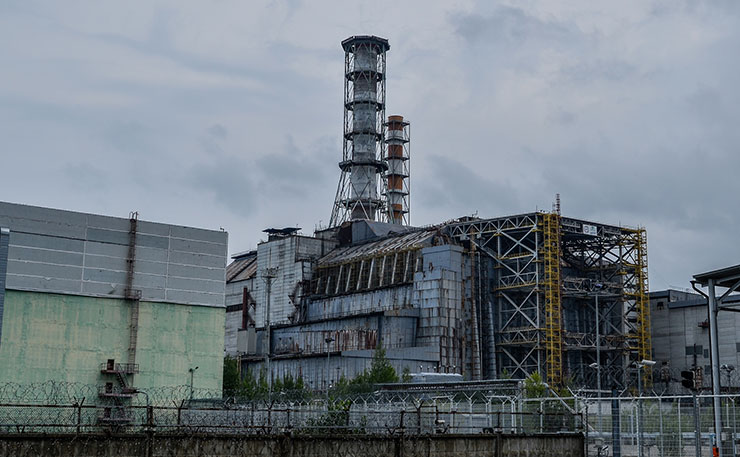
So probably the worst case is a two-pronged attack; both a breach of containment and a disruption of control in such a way as to cause a meltdown and steam explosion. Neither on their own would be dangerous. The Chernobyl explosion was a problem primarily because there was no containment and because that particular reactor used graphite and graphite burns spectacularly well, which helped spread radioactive material. The uncontained explosion and spectacular fire was a pretty much perfect delivery system for the radioactive material.
Despite Chernobyl being a horrific industrial accident, the immediate death toll was relatively small; much smaller than one day’s worth of the fighting in Ukraine that was reportedly killing 100-200 fighters on both sides a couple of weeks back.
The premature-death toll at Chernobyl, mostly from cancers, has been extremely small relative to lifestyle cancers. Ukraine has about 160,000 cancers each year these days, and half that number of deaths, some 84,000. Its population is a little smaller now than in 1986, so in very rough numbers we are talking at least 5.7 million cancers; most from lifestyle factors like drinking, smoking, red and processed meat, obesity and inactivity (and sunshine).
There have been about 6,000 cases of thyroid cancer from the Chernobyl accident. It’s very rare for thyroid cancer to kill. Large swathes of Europe were contaminated but there was no wave of cancers and we understand extremely well now (but not so much in 1986) why such a wave was never going to happen. Radiation simply doesn’t cut it as a carcinogen next to the big ones I listed.
Cellular DNA repair mechanisms cope with extraordinarily high rates of damage from other sources. Adding a little damage from radiation and predicting chaos is like adding a letter to a postman’s bag and expecting them to buckle at the knees. Our body’s DNA repair mechanisms deal with about 10,000 pieces of DNA damage daily, in every cell in our body, as a result of normal (non-radiation) processes. Increased background radiation by 400 fold (a very unlikely scenario) would increase this damage rate to 10,012. If that looks relatively innocuous, it’s because it is.
So what if everything goes wrong and a vast plume of radioactive dust fills the air and contaminates a large area of Ukraine (and Europe)? Not much, if anything.
The bottom line for the public
If you want more details, you can find them, without (unexplained) jargon, here. But the bottom line is that the worst-case scenario, for the public (the risks for workers are very different) is a possible increase in cancer rates. How much of an increase? Very much less than introducing red and processed meat into a country, or alcohol or tobacco.
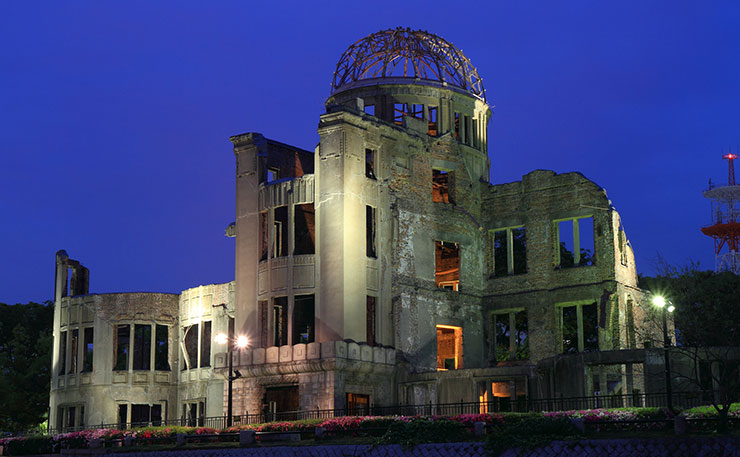
If you look, for example at atomic bomb survivors in Japan, they got a bigger dose than most people could expect as a result of the worst-case scenario with a power plant, but only had an 11 percent increase in solid tumors (with a higher increase for much rarer blood cancers). For people with less than a 1 Sievert dose of radiation, they suffered a median loss of life of about 2 months.
In contrast, the increase in red and processed meat consumption in Japan drove bowel cancer rates about 500 percent. As I said at the beginning of the paragraph, if you want more details, with links to the scientific literature, then read my post here.
A little background on mechanisms
Radioactive material gives off alpha, beta and gamma radiation, which, like sunshine, just radiates through space.
You can stop alpha and beta radiation with paper or cardboard. Things like plutonium, which give off alphas, can be handled without gloves. Standard advice is to use gloves because you don’t want any powder on your hands. As with Covid, whatever is on your hands can end up in your mouth; a bad idea.
You can stop gamma radiation with lead, steel, water, earth or air (meaning just stay away). The magic figure for air is about 3 km. This will cut the gamma radiation from some lump of radioactive stuff by a factor of about 1,000.
If you blow up the fuel in the reactor, or the cooling ponds, then you get plenty of dust which can be swallowed or inhaled. Or it can land on grass and if something eats the grass and if you eat the something (or the grass directly) you get the dust. The dust is carcinogenic because of that alpha and beta radiation. So, as noted above, it’s just like beef or bacon or sunshine or alcohol or tobacco; all of which can damage your DNA.
Most DNA damage is repaired, which is why most smokers don’t get lung cancer, even if they suffer many of the other consequences of smoking.
And what about the workers?
If you are at ground zero for the kind of accident I’m talking about, or you are a worker trying to patch things up, then you can get a big enough dose of radiation to make you seriously ill or kill you. This happened to workers at Chernobyl.
The definitive report from UNSCEAR found that 134 workers got Acute Radiation Syndrome, with 28 deaths. Many of those who died were firefighters with full thickness burns to large areas of their body.
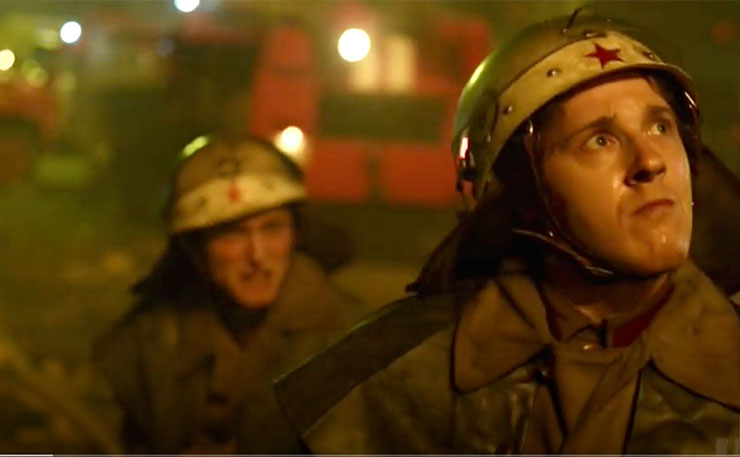
However, radiation wasn’t the biggest risk for workers during that disaster. Fires are far more deadly. The thing about radiation that makes it much easier to deal with than something like, for example, a gas explosion, is that you can measure the radiation.
Emergency workers frequently deal with hazardous smoke and have no idea what it is or what damage it is doing. With radiation you can measure the risk and act appropriately. At Chernobyl, for example, helicopter pilots dropped material on the reactor to put out the fire and seal it. If one pilot had flown many missions doing this, then they’d have died (within weeks or months). Having assessed the dose and the risk, the solution was to get 1,125 pilots to do (mostly) one flight each. They each got a dose of around 0.26 Sieverts.
Full body doses about 50 times higher than this are used during some medical treatments (divided into 12 sub-doses over about 4 days). The cancer rate of those pilots would have risen slightly, but by less than the cancer rate rises in somebody who is obese or drinks a lot.
Comparing a nuclear “disaster” with bacon and the anti-nuclear movement
Bowel cancer in Japan used to cause about 20,000 cases per year. In 2020, there were 148,000 cases of bowel cancer in Japan. The cause is dietary change, mostly from increased red and processed meat.
So is it possible for a nuclear accident to cause such a surge of cancers? No. If the Chernobyl disaster didn’t do it, and it didn’t, then Zaporizhzhia certainly won’t.
In Germany, meanwhile, the closure of nuclear plants after the Fukushima meltdown has caused about 9,000 premature deaths due to increase pollution from coal power plants.
The German response to the Russian gas shutdown has been to open coal plants and cause more premature deaths; it’s just what German Greens do.
Donate To New Matilda
New Matilda is a small, independent media outlet. We survive through reader contributions, and never losing a lawsuit. If you got something from this article, giving something back helps us to continue speaking truth to power. Every little bit counts.

